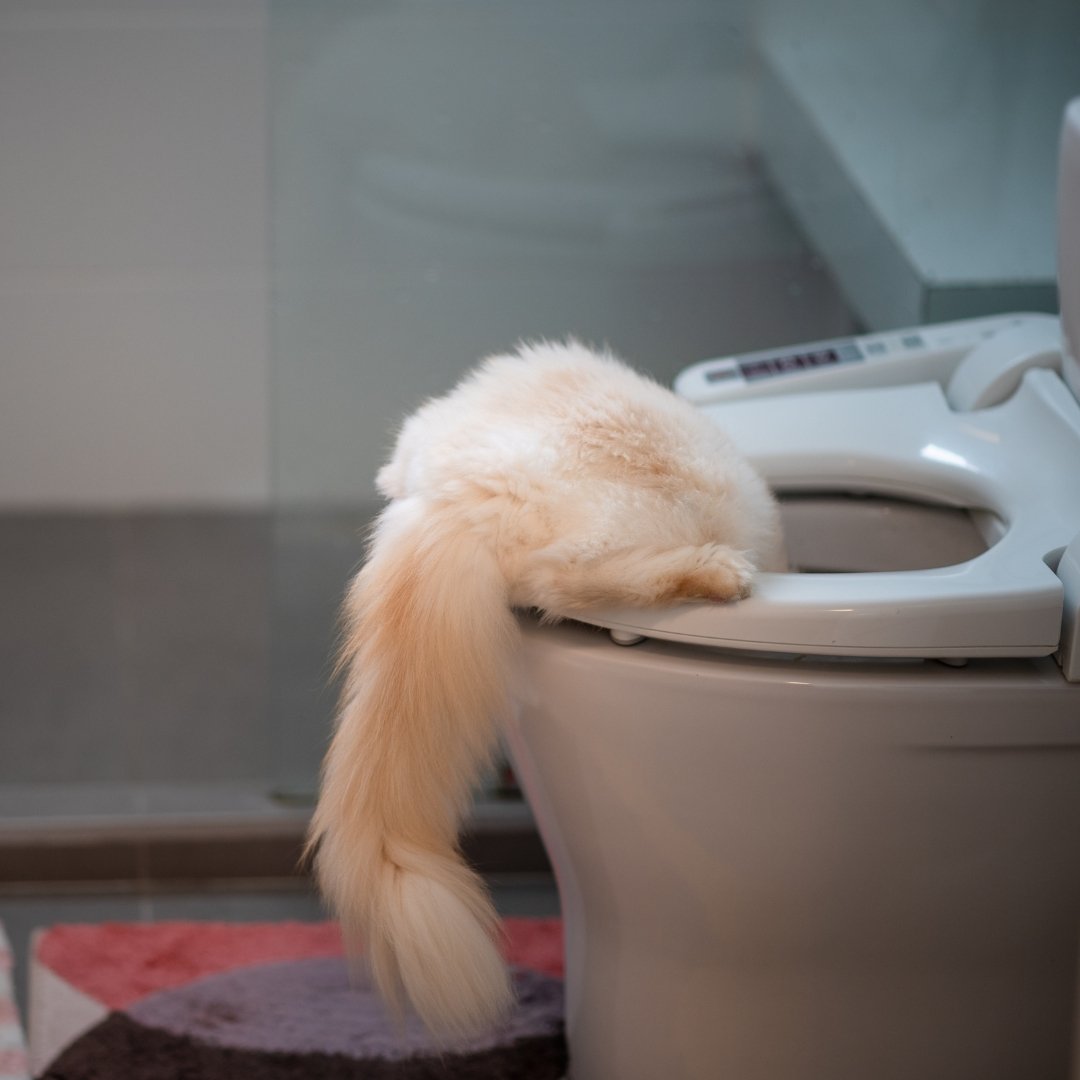Potential Risks of Flushing Cat Poop Down Your Toilet - Advice for Better Handling
Potential Risks of Flushing Cat Poop Down Your Toilet - Advice for Better Handling
Blog Article
Listed here in the next paragraph you can locate some brilliant ideas about Don’t flush cat feces down the toilet.

Introduction
As feline owners, it's important to bear in mind just how we take care of our feline close friends' waste. While it may seem practical to flush pet cat poop down the commode, this practice can have detrimental consequences for both the environment and human health.
Environmental Impact
Flushing cat poop introduces hazardous microorganisms and parasites into the water, posturing a significant threat to water environments. These impurities can adversely influence marine life and compromise water high quality.
Health and wellness Risks
In addition to environmental worries, flushing feline waste can likewise pose health risks to humans. Pet cat feces might have Toxoplasma gondii, a bloodsucker that can trigger toxoplasmosis-- a potentially severe disease, specifically for expectant females and people with weakened immune systems.
Alternatives to Flushing
Fortunately, there are much safer and much more responsible methods to dispose of feline poop. Think about the complying with alternatives:
1. Scoop and Dispose in Trash
The most usual technique of dealing with pet cat poop is to scoop it right into a naturally degradable bag and throw it in the garbage. Make sure to utilize a devoted litter inside story and get rid of the waste promptly.
2. Usage Biodegradable Litter
Go with naturally degradable cat trash made from products such as corn or wheat. These clutters are environmentally friendly and can be securely gotten rid of in the trash.
3. Hide in the Yard
If you have a lawn, take into consideration burying pet cat waste in a designated area far from vegetable yards and water resources. Make sure to dig deep enough to avoid contamination of groundwater.
4. Install a Pet Waste Disposal System
Buy a pet dog garbage disposal system especially designed for pet cat waste. These systems use enzymes to break down the waste, minimizing smell and environmental influence.
Conclusion
Responsible animal possession expands beyond offering food and sanctuary-- it additionally involves appropriate waste administration. By avoiding purging feline poop down the bathroom and choosing alternative disposal approaches, we can reduce our ecological footprint and protect human health and wellness.
Why Can’t I Flush Cat Poop?
It Spreads a Parasite
Cats are frequently infected with a parasite called toxoplasma gondii. The parasite causes an infection called toxoplasmosis. It is usually harmless to cats. The parasite only uses cat poop as a host for its eggs. Otherwise, the cat’s immune system usually keeps the infection at low enough levels to maintain its own health. But it does not stop the develop of eggs. These eggs are tiny and surprisingly tough. They may survive for a year before they begin to grow. But that’s the problem.
Our wastewater system is not designed to deal with toxoplasmosis eggs. Instead, most eggs will flush from your toilet into sewers and wastewater management plants. After the sewage is treated for many other harmful things in it, it is typically released into local rivers, lakes, or oceans. Here, the toxoplasmosis eggs can find new hosts, including starfish, crabs, otters, and many other wildlife. For many, this is a significant risk to their health. Toxoplasmosis can also end up infecting water sources that are important for agriculture, which means our deer, pigs, and sheep can get infected too.
Is There Risk to Humans?
There can be a risk to human life from flushing cat poop down the toilet. If you do so, the parasites from your cat’s poop can end up in shellfish, game animals, or livestock. If this meat is then served raw or undercooked, the people who eat it can get sick.
In fact, according to the CDC, 40 million people in the United States are infected with toxoplasma gondii. They get it from exposure to infected seafood, or from some kind of cat poop contamination, like drinking from a stream that is contaminated or touching anything that has come into contact with cat poop. That includes just cleaning a cat litter box.
Most people who get infected with these parasites will not develop any symptoms. However, for pregnant women or for those with compromised immune systems, the parasite can cause severe health problems.
How to Handle Cat Poop
The best way to handle cat poop is actually to clean the box more often. The eggs that the parasite sheds will not become active until one to five days after the cat poops. That means that if you clean daily, you’re much less likely to come into direct contact with infectious eggs.
That said, always dispose of cat poop in the garbage and not down the toilet. Wash your hands before and after you clean the litter box, and bring the bag of poop right outside to your garbage bins.
https://trenchlesssolutionsusa.com/why-cant-i-flush-cat-poop/

I came across that post about Don’t flush cat feces down the toilet while browsing on the web. Kindly take the time to share this blog if you appreciated it. We treasure reading our article about Don’t flush cat feces down the toilet.
Click Here Report this page